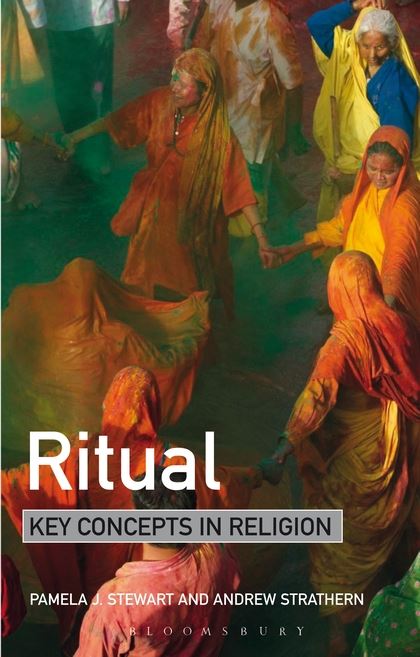Download PDF: RV Lemons, Ritual
By Pamela J. Stewart and Andrew Strathern
New York: Bloomsbury Academic, 2014. 171 pages. $24.65
Pamela J. Stewart and Andrew Strathern are anthropological research collaborators who have published over forty-five books and two-hundred research articles together. The latest publication for this husband-and-wife team is entitled Ritual: Key Concepts In Religion. The book seeks to provide an introduction to ritual studies for undergraduate and graduate students. My review is motivated by the question “Would I assign this book to my undergraduate or graduate students?”
Stewart and Strathern’s book fills a growing niche in the publishing market to provide short, inexpensive introductory textbooks. Stewart and Strathern acknowledge in the preface that at points they sacrificed depth for breadth in order to meet the book’s primary aim to be an introductory text. The authors divide their attention between classic and contemporary approaches to ritual. Furthermore, they frame ritual as a community-acknowledged practice and performance that upholds important values of society. They reference the works of Frazer, Tylor, Radcliffe Brown, Harrison, Durkheim, van Gennep, Malinowski, Boas, Turner, Fortes, Evans-Pritchard, Bourdieu, Bell, and others to build a base from which to consider important themes within ritual studies. The authors reference primary sources and pertinent ethnographic examples to describe themes including social order, rites of passage, sacrifice, secrecy, and ritual failure.
Stewart and Strathern cover over one-hundred years of material in ritual studies. Roughly the first half of the book focuses on classic anthropological theories and theorists of ritual studies. This half is easy to follow and convincing. They follow closely the accepted narrative that has developed over time about classic approaches to ritual studies. For example, the authors highlight the connections of thought between Radcliffe-Brown, Boas, and Malinowski, and describe why Boas settled on a four-field anthropological approach for the American school of thought. In this and other examples about classic anthropologists, the authors astutely describe the early development of the anthropology of ritual.
While Stewart and Strathern’s coverage of classic ritual studies is based on an accepted historical progression, their coverage of contemporary approaches to ritual studies was primarily driven by themes in no obvious order. The result is that the contemporary section of the book lacks a sense of progression and a consensus of what is most important to contemporary ritual studies. For example, the reader is not informed if a contemporary theme like “ritual failure” is more or less important than “performance and performativity.” Additionally, theorists like Bourdieu, Bell, Latour, and Gibson are connected with anthropological themes without a sense of who is of most importance to the field. To be fair, writing about contemporary approaches is challenging, especially considering the fact that Stewart and Strathern are integral players in contemporary studies of ritual. That being said, switching the approach to writing midway through the book is difficult for the reader. Perhaps the authors should have followed their approach to classical ritual studies in their writing about contemporary ritual studies. If so, they would have allowed the theorists to drive the discussion.
To conclude I return to the question, “Would I assign this book to my undergraduate or graduate students?” I would assign this book primarily on the strength of the first half of the book, which covers classic approaches to ritual studies. The second half of the book I would use as a reference for my class, but not assign it for students to read. If my students used Ritual: Key Concepts In Religion, I think they would gain an overview of the key themes involved in ritual studies and the approaches theorists took to understand ritual and I know they would approve of the price.
Cover photo courtesy of Bloomsbury Press. Used with permission.




